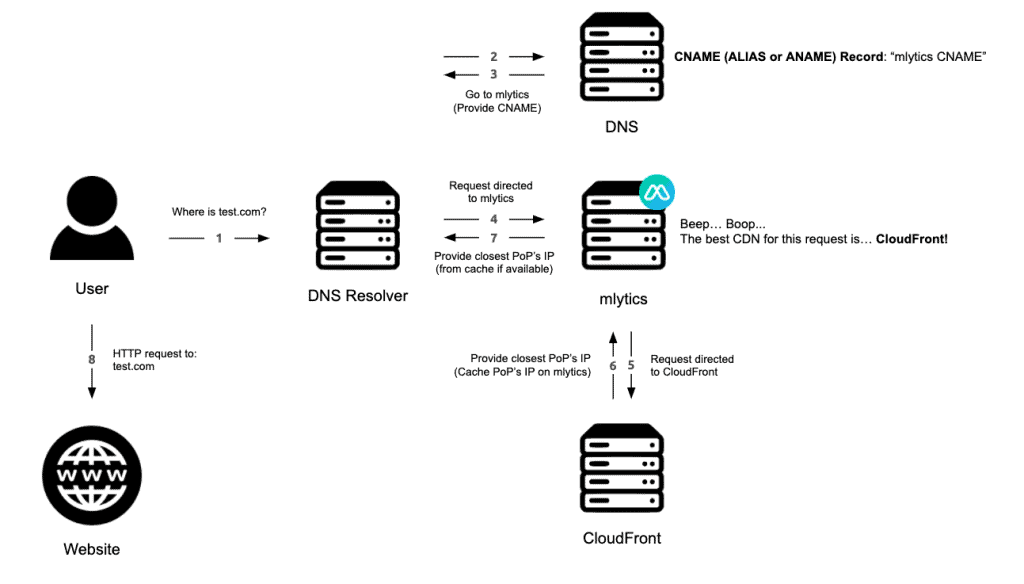Introduction
In the world of web hosting and domain management, optimizing DNS (Domain Name System) performance and reliability is paramount. DNS plays a vital role in directing users to their desired websites by translating human-readable domain names into machine-readable IP addresses. One technique that has gained attention in recent years for improving DNS is CNAME flattening. In this article, we will delve into CNAME flattening, exploring what it is, how it works, and why it’s essential for modern web infrastructure.

What is CNAME Flattening?
CNAME flattening, also known as CNAME at the apex or ANAME (Address Record) record, is a DNS configuration technique that addresses a long-standing challenge in DNS management. Traditionally, CNAME records are used to point a domain name to another domain name, allowing for easy redirection and aliasing. However, a limitation exists: CNAME records cannot coexist with other records at the root of a domain. This means that you couldn’t have a CNAME record for your root domain (e.g., example.com) and simultaneously use other essential records like MX (Mail Exchange) or NS (Name Server) records.
CNAME flattening solves this problem by allowing CNAME-like behavior at the root of the domain while maintaining compatibility with other critical DNS records.
How Does CNAME Flattening Work?
To understand how CNAME flattening works, let’s consider a scenario. Suppose you have a website hosted on a content delivery network (CDN) and you want to associate your root domain (e.g., example.com) with the CDN. Traditionally, you might create a CNAME record pointing to the CDN’s domain (e.g., cdn-provider.com). However, this would conflict with other records you need for essential services like email.
CNAME flattening services operate at the DNS provider level. When you configure a CNAME flattening record for your root domain, the DNS provider handles DNS queries in a smart way. Instead of responding with a CNAME record, it returns an A or AAAA record containing the IP address of the target (CDN). This enables you to associate your root domain with the CDN while maintaining compatibility with other records.
Benefits of CNAME Flattening
Improved Website Performance
CNAME flattening reduces DNS lookup times by minimizing the number of DNS queries required to resolve a domain. This leads to faster website loading times, crucial for delivering an optimal user experience.
Enhanced Reliability
With traditional CNAME records, if the target domain (e.g., cdn-provider.com) experiences downtime or changes its IP address, your website may become inaccessible. CNAME flattening services actively monitor the target and can quickly update the DNS resolution, ensuring your website remains accessible and reliable.
Simplified DNS Management
CNAME flattening simplifies DNS management by allowing you to use CNAME-like behavior at the root domain without compromising other DNS records’ functionality. This streamlines your DNS configuration and reduces potential errors.
Implementing CNAME Flattening
To implement CNAME flattening for your domain, follow these general steps:
- Choose a DNS provider that offers CNAME flattening as a feature such as Cloudflare or Azure DNS
- Access your DNS provider’s dashboard and locate the CNAME flattening or ANAME configuration option.
- Configure the CNAME flattening record by specifying the root domain (e.g., example.com) and the target domain (e.g., cdn-provider.com).
- Save your changes, and the DNS provider will take care of the rest.
Remember that the exact steps may vary depending on your DNS provider, so consult their documentation for specific instructions.
Conclusion
CNAME flattening is a game-changer for modern web infrastructure, allowing website owners to harness the power of CNAME-like behavior at the root domain while maintaining DNS compatibility. With improved performance, reliability, and simplified DNS management, CNAME flattening is a valuable tool for anyone looking to optimize their online presence.
In a digital landscape where website speed and uptime are crucial, CNAME flattening emerges as a vital technique, ensuring that your online visitors enjoy a seamless and responsive user experience.

Leave a Reply